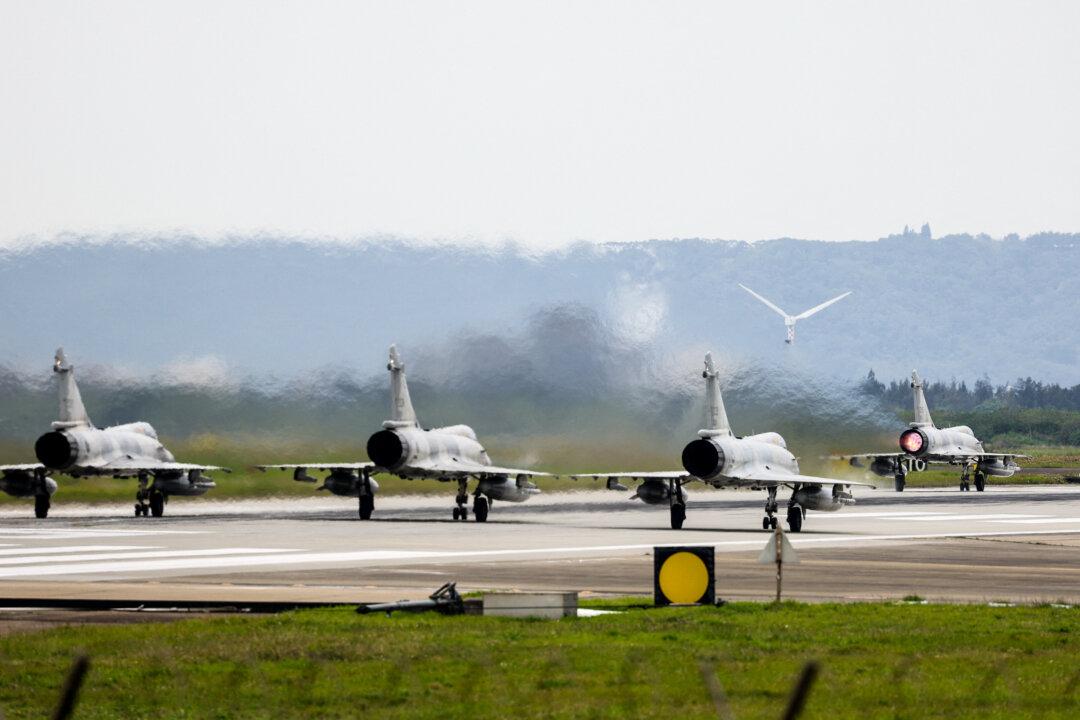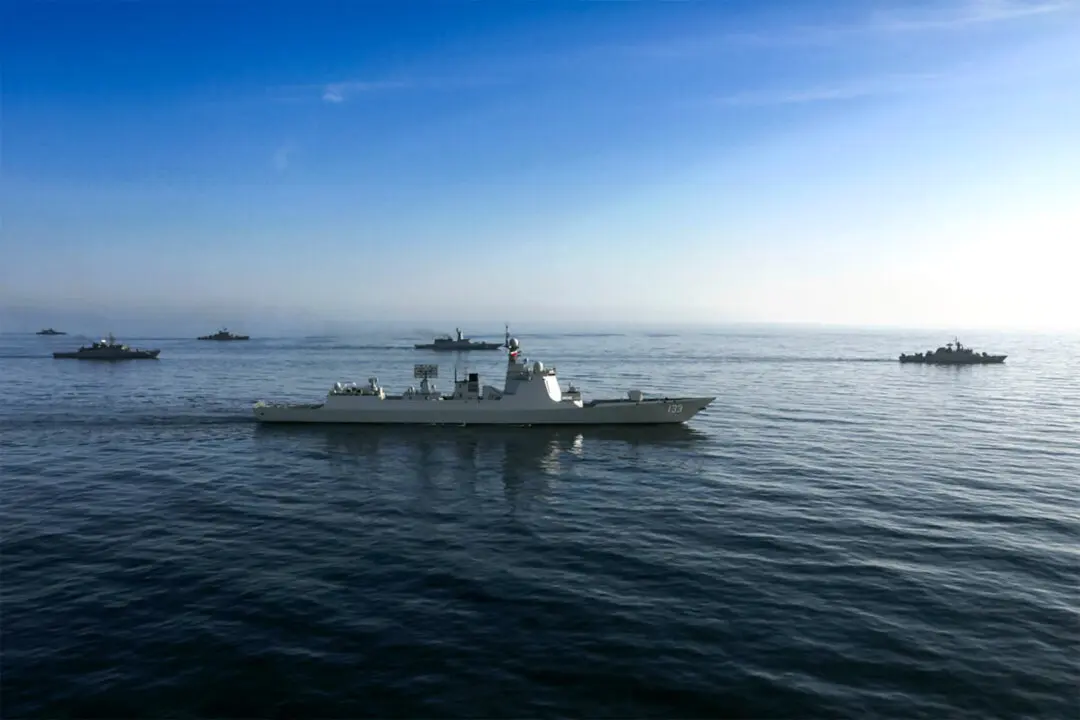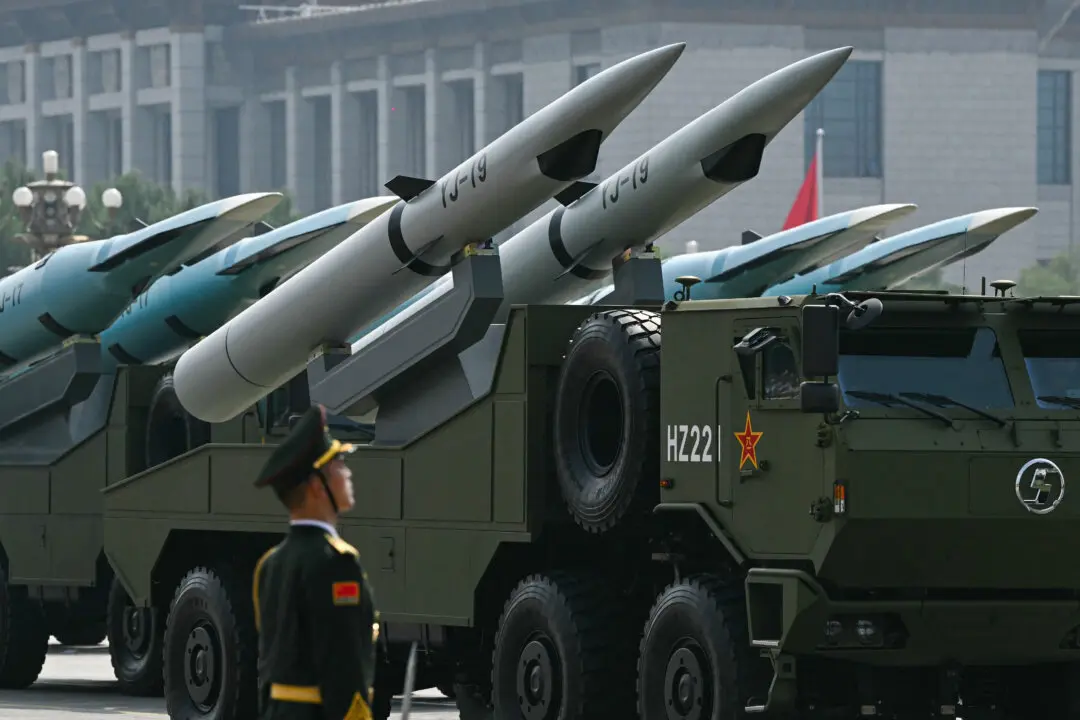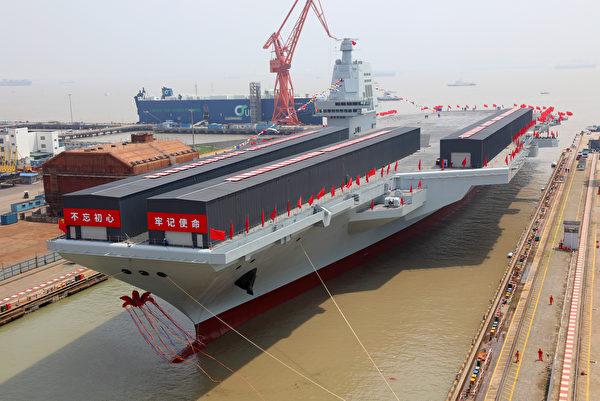Commentary
From April 1 to 2, Beijing conducted a hasty joint exercise near Taiwan, which was later named “Strait Thunder-2025A” before being quickly concluded.
The preparation for the exercise appeared rushed, and propaganda videos were used to fill in the gaps, revealing at least five major flaws, which may be directly related to internal turmoil within the Chinese military.
1. ‘Unified Command of Eastern Theater Command’?
China Central Television (CCTV), the Chinese Communist Party (CCP) mouthpiece, stated that “under the unified command of the Eastern Theater Command, the Shandong aircraft carrier strike group conducted exercises in the air and maritime space to the east of Taiwan Island, collaborating with forward-deployed air and naval forces on missions such as ship-aircraft coordination, area air superiority, and anti-ship and anti-land strikes.”
The state media report further stated that “The Eastern Theater Command successfully completed various joint training tasks around Taiwan Island, fully testing the integrated joint operational capabilities of the forces.”
During this exercise, the Shandong aircraft carrier fleet passed through the Bashi Channel and entered the southeastern waters of Taiwan, which should be considered a major highlight. The fleet accompanying the Shandong included one 055 destroyer, one 052D destroyer, one 054A frigate, and one supply ship. All these ships belong to the Southern Theater Command, and the Eastern Theater Command cannot effectively command them.
Once the Shandong aircraft carrier fleet left the South China Sea, it left the jurisdiction of the Southern Theater Command. The only entities that could truly command it would be the CCP’s Central Military Commission (CMC) or the Navy Headquarters.
The Eastern Theater Command is responsible for operations in the Taiwan Strait and the East China Sea, and it later claimed to have expanded its responsibilities to the Pacific. However, the Pacific region is too vast, and the Eastern Theater Command does not have the capability to control the entire Pacific. When the Shandong aircraft carrier fleet entered the Pacific, it theoretically entered the responsibility area of the Eastern Theater Command, yet the Eastern Theater Command had no authority to command it, as it was not during wartime.
After the 2016 military reforms, the major military regions were replaced by five military theaters, with the CMC clearly affirming “the CMC’s overarching leadership role, the Theater Commands’ responsibility for military operations, and the services’ focus on developing capabilities.”
This clearly distinguishes the authority and responsibilities between the military theaters and the services. The management of the forces of each military service is actually handled by the headquarters of the respective services, while the theaters are only responsible for combat operations. As long as there is no war, the theaters are essentially ineffective. Each theater has established army, navy, and air force agencies, but they still answer to the service headquarters, assisting in managing the forces within their respective regions, including training.
The headquarters of the Chinese Army, Navy, Air Force, Rocket Force, and support units are all located in Beijing, and they directly follow the commands of the CMC. The Rocket Force and various support units do not belong to any theater, so the Eastern Theater Command cannot command them. The military reform is essentially the dismantling of the original military regions, a reshuffling, with the real power being concentrated as much as possible within the CMC.
This time, the exercise should have been commanded by the CMC, yet they deliberately emphasized “unified command by the Eastern Theater Command.” On one hand, this may be an attempt to downplay the significance; on the other hand, it seems aimed at covering up rumors regarding the arrest of Eastern Theater Command Commander Lin Xiangyang, creating a sense that the Eastern Theater Command can still fight.
Such propaganda feels forced and somewhat low-level. The CCP’s theater system is practically difficult to operate. This is the first major flaw in the military exercise. If the CCP were to go to war in the Taiwan Strait, it’s hard to imagine the CMC allowing the “Eastern Theater Command to have unified command.”




